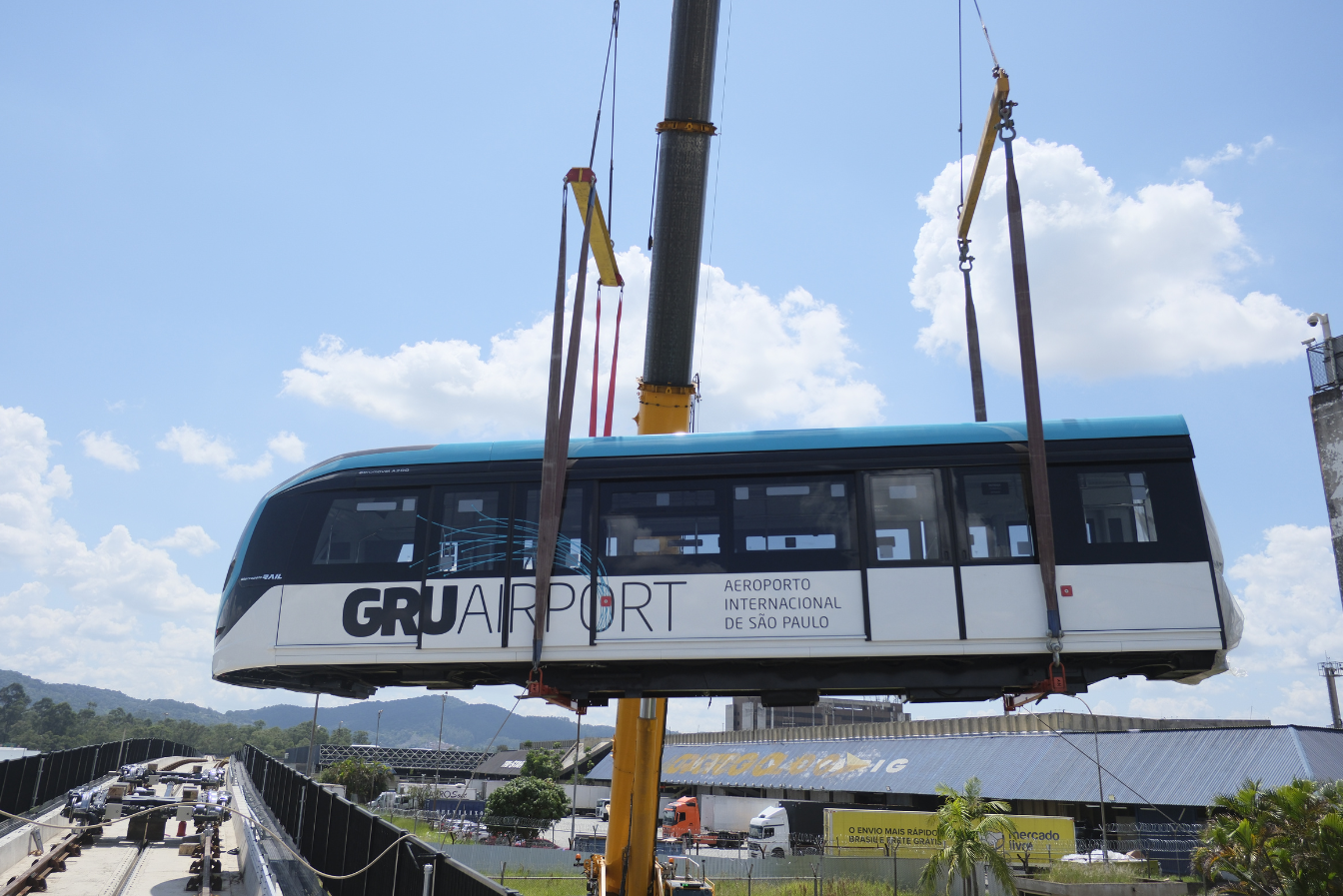
April 01, 2024
The assembly and hoisting process of Aeromovel vehicles is meticulously planned and executed in several stages, aimed at ensuring seamless and efficient operation.
Stages
The transportation of vehicles, from the manufacturer to the installation site, is carried out using low-floor trailers. Each vehicle module is hoisted onto a trailer with the assistance of a crane. Trucks and propulsion plates are transported separately.
The first stage at the installation site involves the hoisting of trucks and propulsion plates. These components are inserted into the track via an intermediate access point. After the assembly of these components, the vehicle modules are hoisted. Once positioned on the trucks, the integration and fixation of the articulation that joins the two modules occur.
Subsequent stages involve commissioning tests to ensure perfect functioning and compliance with established quality standards.
Watch this video to understand the complete dynamics of this operation:
Characteristics of Model A200
The Aeromovel vehicle model A200 consists of two articulated modules, totaling 24.7 meters in length. Each vehicle has three trucks with four wheels each, totaling 12 wheels. Propulsion plates are fixed on the end trucks, situated inside the pressurized duct. These plates, subjected to positive or negative air pressure, promote the vehicle’s movement forward or backward, as well as providing smooth braking.
The A200 features automatic door opening, air-conditioning system, fireproof mechanism, emergency exit at each end, dedicated space for people with reduced mobility, and easy access to the interior area, with eight wide doors. The internal layout is designed to optimize passenger flow.
All materials, components, and equipment of the vehicles are manufactured following rigorous standards for metro railway systems, including structural tests ensuring durability and robustness throughout the lifecycle, as well as compliance with fire safety and smoke emission standards. The models undergo quality controls in all manufacturing processes, including meticulous welding inspection. Additionally, the high rate of component nationalization reinforces the national character of production.